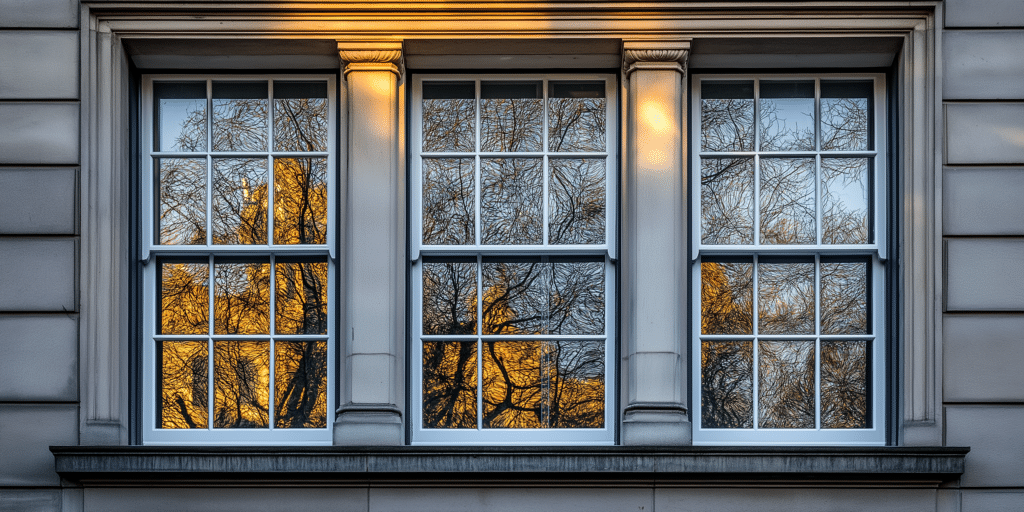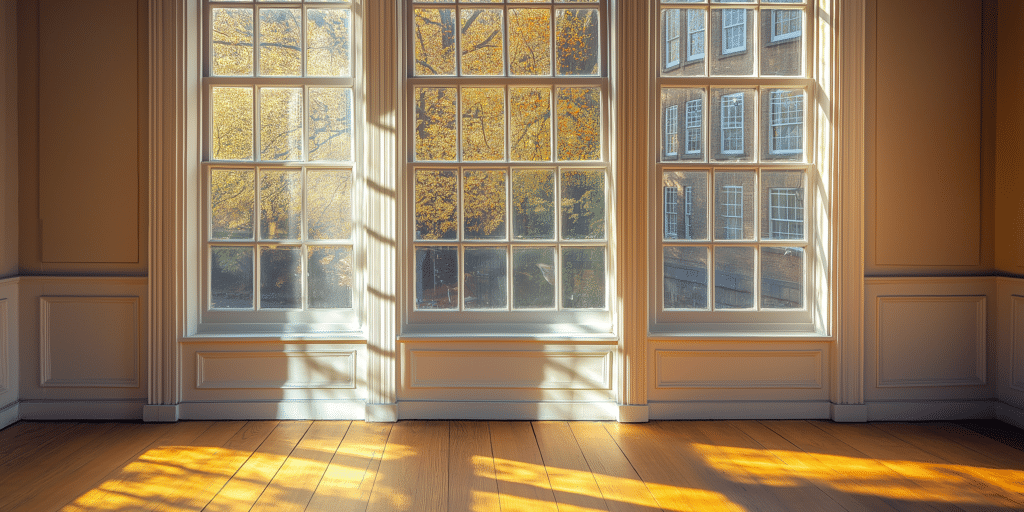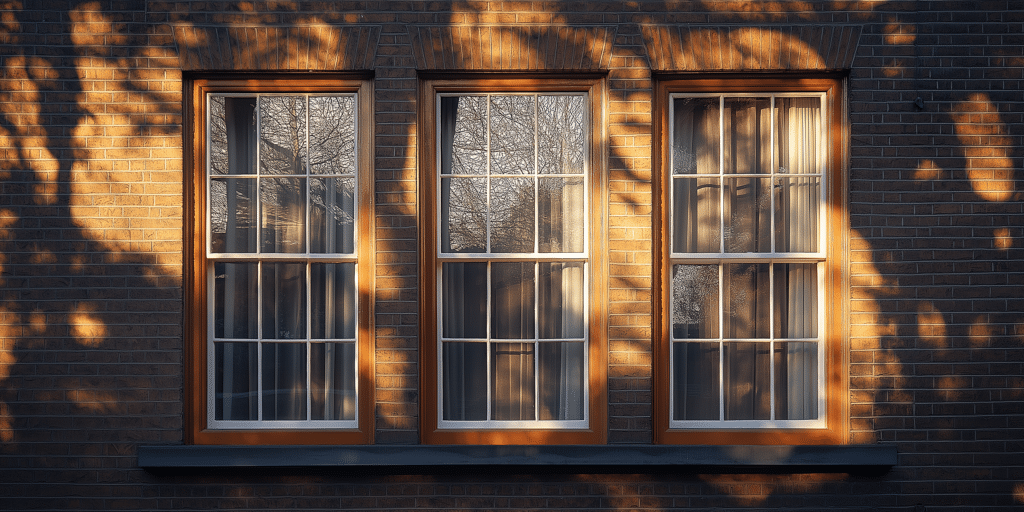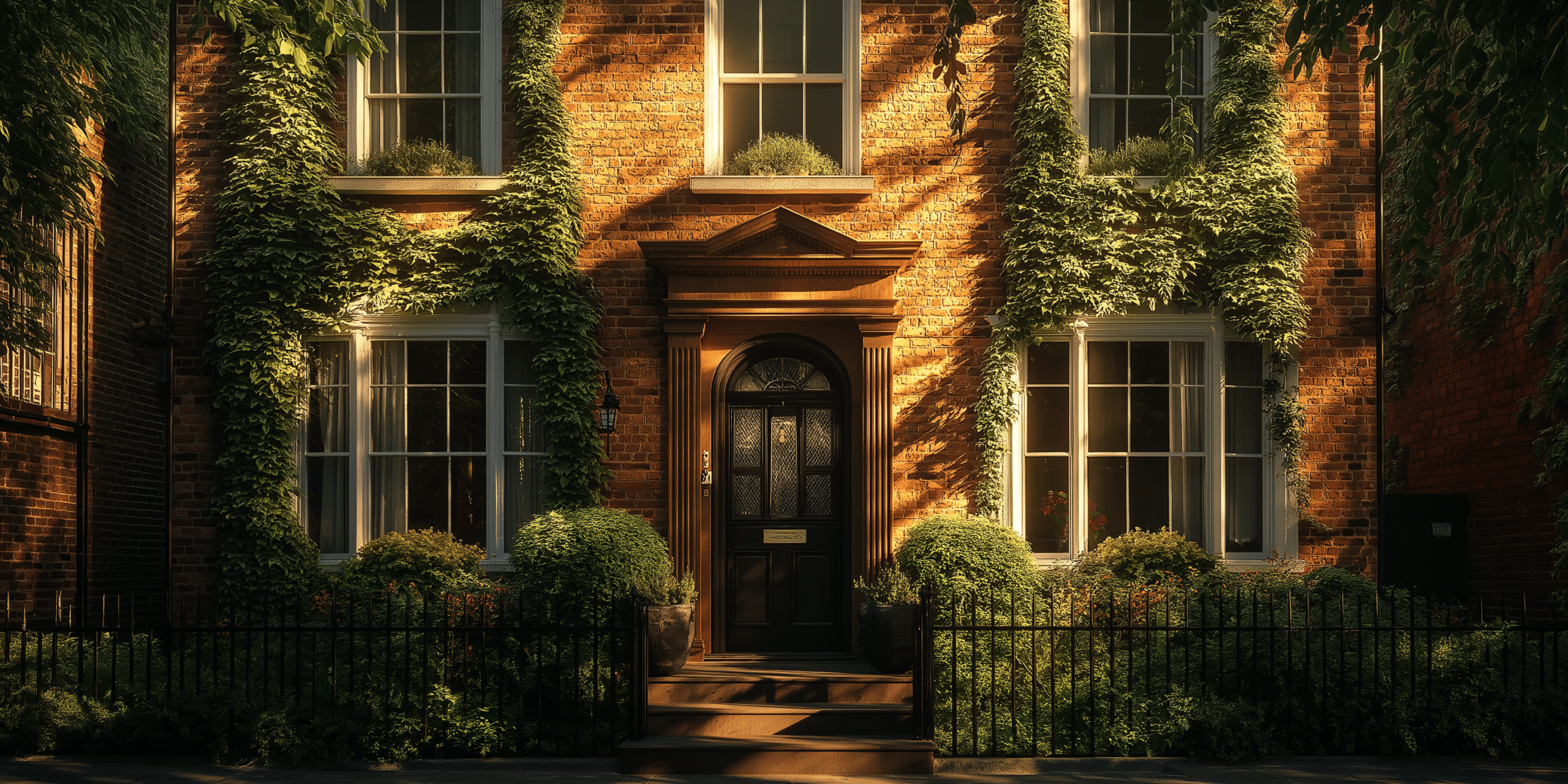Understanding the Design and Structure of Fixed Light Sash Windows

The materials commonly used in the construction of fixed light sash windows include timber, uPVC, and aluminium. Timber, renowned for its traditional appeal, provides a classic aesthetic that can be tailored to match various architectural styles. However, it requires regular maintenance to protect against weathering and decay. uPVC, on the other hand, offers excellent thermal efficiency and minimal upkeep, making it a popular choice for modern homes. Aluminium frames, with their strength and slim profiles, allow for larger panes of glass, thereby maximizing natural light and offering a sleek, contemporary look. Accoya is the preferred material for window frames because it is beautiful, natural, durable, and strong, highlighting the importance of material selection in achieving both aesthetic and structural goals.
The fixed light design eliminates the need for movable sashes, reducing the risk of mechanical failures and extending the window’s lifespan. This design choice also enhances the window’s security, as there are no operable parts that could be tampered with. Moreover, fixed light sash windows contribute to the overall energy efficiency of a building by providing a tighter seal against the elements, reducing heat loss and preventing drafts. Older timber sash windows struggle badly in poor weather conditions… water can seep into the timber and cause gaps to emerge, leading to cold air rushing through your home,” emphasizing the benefits of using fixed light designs to avoid such issues.
Historical Significance of Fixed Light Sash Windows
Fixed light sash windows hold a significant place in historical architecture, particularly during the Georgian and Victorian eras. These windows were often used alongside operable sashes to create a symmetrical and balanced facade, a hallmark of these architectural styles. The Georgian period, known for its emphasis on proportion and symmetry, often featured fixed light sash windows with a six-over-six grid pattern, providing a uniform appearance that complemented the overall design ethos of the time.
During the Victorian era, fixed light sash windows became more elaborate, with intricate glazing bars and decorative elements that reflected the period’s ornate architectural trends. These windows are crucial in preserving the historical authenticity of heritage buildings. Restoring your existing traditional sash windows as opposed to replacing them is a cost-effective way of retaining the original character of your windows, highlighting the importance of maintaining these elements in historic preservation.
The preservation of fixed light sash windows in heritage properties is not only about maintaining aesthetic continuity but also about safeguarding the architectural narrative of the past. Their retention ensures that the historical integrity of the building remains intact, offering a window into the architectural practices and styles of previous centuries. Fixed light sash windows, with their simple yet elegant design, play a vital role in this preservation, providing a tangible link to the past.
Advantages of Using Fixed Light Sash Windows
Fixed light sash windows offer several advantages, particularly in enhancing the energy efficiency of a building. Since these windows are sealed all around, they provide superior thermal insulation, reducing heat loss and preventing drafts. This leads to lower energy consumption and, consequently, reduced heating and cooling costs. In terms of security, the non-operable design of fixed light sash windows makes them inherently more secure than their movable counterparts. Without any moving parts, these windows are less susceptible to tampering, offering an additional layer of protection for homeowners.
The durability of fixed light sash windows is another significant advantage. The absence of moving components means there is less wear and tear, resulting in a longer lifespan for the window. Most older timber sash windows need repainting in only four years, and other problems can occur not long after that. In contrast, fixed light sash windows, especially those made from modern materials like uPVC or aluminium, require far less maintenance and are more resistant to the elements.
Aesthetically, fixed light sash windows offer a clean, uninterrupted view that enhances the overall appearance of a building. The simplicity of their design complements both traditional and contemporary architectural styles, making them a versatile choice for homeowners. This aesthetic appeal, combined with their functional benefits, makes fixed light sash windows a preferred option for many, particularly in settings where maintaining a classic look is important.
Material Options for Fixed Light Sash Windows

When choosing materials for fixed light sash windows, homeowners have several options, each with its own set of advantages and disadvantages. Timber, for example, offers a timeless appeal and can be customized to match any architectural style. However, regular maintenance is required to protect against rot and decay. uPVC, known for its energy efficiency and low maintenance, is a popular choice for modern homes. Aluminium, with its strength and slim profiles, allows for larger panes of glass, but it can be more expensive and may require additional insulation to achieve the same thermal performance as uPVC.
The choice of material largely determines the longevity of fixed light sash windows. Timber, while beautiful, may not last as long as uPVC or aluminium without significant upkeep. Unlike many other companies, we manufacture our windows and doors in our purpose-built, state-of-the-art Guildford workshop, and then our full-time fitters will install them, highlighting the importance of quality craftsmanship in ensuring the longevity of these windows. uPVC and aluminium, on the other hand, offer longer lifespans with less maintenance, making them ideal for homeowners seeking a durable, low-maintenance option.
Maintenance requirements also vary by material. Timber frames need periodic painting or staining, while uPVC frames require only occasional cleaning. Aluminium frames, though durable, may need attention to prevent corrosion, particularly in coastal environments. The choice of material should, therefore, be guided by the homeowner’s priorities, whether that be aesthetic appeal, maintenance ease, or long-term durability.
Energy Efficiency Considerations for Fixed Light Sash Windows
Fixed light sash windows contribute significantly to a building’s thermal insulation, as their sealed design minimizes air leakage and enhances energy efficiency. This can result in substantial energy savings over time. Homeowners looking to improve the energy efficiency of their fixed-light sash windows have several glazing options to consider. Double glazing, Low-E glass, and argon gas filling between panes are some of the most effective choices, offering enhanced insulation and reduced heat transfer.
To further improve the energy performance of existing fixed light sash windows, homeowners can retrofit them with double glazing, add weather stripping, or apply thermal films. These upgrades can significantly enhance the window’s ability to retain heat, thereby reducing energy consumption. Recent advancements in energy-efficient technologies include triple glazing, vacuum-insulated glazing, and advanced Low-E coatings, which are designed to maximize insulation and minimize heat loss. This attention to detail during installation ensures that energy efficiency improvements are fully realized.
Additionally, choosing the right frame material can also impact energy efficiency. uPVC and aluminium frames with thermal breaks are particularly effective in reducing heat transfer, making them ideal for energy-conscious homeowners. Timber frames, while less efficient in their natural state, can be enhanced with modern insulation techniques to achieve comparable levels of energy performance.
Installation Process for Fixed Light Sash Windows
The installation of fixed light sash windows is a relatively straightforward process, beginning with precise measurements to ensure a perfect fit. This is followed by the preparation of the window opening, the installation of the frame, and the securing of the glazing. Unlike operable sash windows, the installation of fixed light sash windows is simpler due to the absence of moving parts, which reduces the complexity of the process.
When retrofitting fixed light sash windows into older buildings, special care must be taken to match the new windows with the historical style of the structure. This often involves custom fabrication to ensure that the windows blend seamlessly with the existing architecture. One challenge in this process is dealing with uneven openings, which are common in older buildings. To address this, skilled installers may need to adjust the frame or use specialized materials to achieve an airtight seal.
Older period properties require extra special care and attention to detail. We treat every home we work in as if it were our own. This highlights the importance of selecting experienced professionals who can navigate the challenges of installing fixed light sash windows in heritage properties. Ensuring a proper installation not only preserves the aesthetic integrity of the building but also maximizes the performance and longevity of the windows.
Maintenance and Care for Fixed Light Sash Windows

Maintaining fixed light sash windows involves regular cleaning, inspection, and minor repairs to ensure they remain in optimal condition. Cleaning the glazing and checking the seals for any signs of wear or damage are crucial steps in preserving the window’s appearance and functionality.
Regular inspections are essential for identifying issues such as condensation, sealant deterioration, or frame warping. These problems, if left unaddressed, can lead to more significant damage over time. Inspect their sash windows at least once a year, especially before and after the winter season, to catch any potential issues early. By addressing these problems promptly, homeowners can prevent costly repairs and maintain the energy efficiency and security of their windows.
Common issues that can arise with fixed light sash windows include condensation between panes in double-glazed units, which may indicate a failure in the seal. Sealant deterioration, particularly around the frame, can also lead to air and water infiltration. Addressing these issues involves resealing, replacing affected parts, or adjusting the frame. Proper maintenance of sash windows is not just about aesthetics; it’s about ensuring your home remains warm, secure, and energy-efficient.
Proper maintenance can significantly extend the lifespan of fixed light sash windows, ensuring they remain both functional and aesthetically pleasing for many years. By investing in regular upkeep, homeowners can protect their investment and continue to enjoy the benefits of these elegant windows. This is particularly important for those living in older properties, where the preservation of original features, such as sash windows, can add substantial value to the home.
Comparing Fixed Light Sash Windows with Other Window Types
Fixed light sash windows are often compared to other window types, such as casement and double-hung sash windows, each offering different advantages. In terms of functionality, casement windows provide ventilation and are easy to clean, but they can obstruct external space when opened. Fixed light sash windows, on the other hand, offer unobstructed views and enhanced security due to their non-operable design. While casement windows can be practical, the aesthetic and security benefits of fixed light sash windows often make them the preferred choice for many homeowners.
When comparing fixed light sash windows to double-hung sash windows, the primary difference lies in operability. Double-hung sash windows allow for greater ventilation, as both the upper and lower sashes can be opened. However, this feature also introduces more opportunities for air leakage, which can reduce energy efficiency. Fixed light sash windows excel in providing superior thermal insulation and security, making them a better choice for those prioritizing energy efficiency and safety. The simplicity and efficiency of fixed light sash windows make them an excellent option for spaces where ventilation is not a priority.
Cost is another factor where fixed light sash windows often have an advantage. Due to their simpler design and fewer components, they are generally less expensive to manufacture and install than operable windows. This cost-effectiveness makes them an attractive option for homeowners looking to maximize value without compromising on quality. In situations where maximum light entry, security, and insulation are the primary concerns, fixed light sash windows are often the preferred choice.
Scenarios where fixed light sash windows are ideal include stairwells, high walls, or areas where windows are not required to open. Their design allows for large panes of glass, providing ample natural light without the need for operability. This makes them a popular choice for both modern and traditional architectural styles, where maintaining a clean, elegant look is important.
Customisation Options for Fixed Light Sash Windows
Fixed light sash windows offer a range of customisation options, allowing homeowners to tailor the design to suit their property’s architectural style. Design customisations include choices in frame material, glazing types, colour finishes, and the inclusion of decorative elements such as muntins or leaded glass. Customising your sash windows to reflect the character of your home can enhance both its aesthetic appeal and its market value.
Personalising the look of fixed light sash windows is relatively straightforward. Homeowners can select frame materials and finishes that complement the overall design of their property. For example, a Georgian-style home might benefit from traditional timber frames with a white or cream finish, while a modern property might look better with sleek aluminium frames in a bold colour. Adding features such as bespoke glazing designs or period-specific hardware can further enhance the window’s appeal.
The latest trends in fixed light sash window design and customisation include the use of slimline aluminium frames for a contemporary look, coloured frames for a bold statement, and triple glazing for enhanced energy efficiency. These trends reflect the growing demand for windows that combine aesthetic appeal with practical benefits. Innovations in glazing technology have made it possible to achieve higher energy efficiency without compromising on style.
Customisation does impact both the cost and installation process of fixed light sash windows. While bespoke designs and high-end materials add to the overall expense, they allow homeowners to achieve a unique look that aligns with their vision. Additionally, customisation may extend the installation timeline, as bespoke components often require longer lead times. However, the result is a set of windows that not only enhances the property’s appearance but also contributes to its overall value.
Environmental Impact and Sustainability of Fixed Light Sash Windows

Fixed light sash windows can contribute significantly to sustainable building practices, especially when made from eco-friendly materials like FSC-certified timber or recycled aluminium. These materials reduce the building process’s carbon footprint and promote sustainability. Using sustainable materials in window construction not only benefits the environment but also enhances the longevity and performance of the windows themselves.
The production of fixed light sash windows increasingly incorporates eco-friendly processes, such as the use of low-VOC finishes and energy-efficient manufacturing techniques. These practices help to minimize the environmental impact of window production. Additionally, the choice of sustainable materials, such as timber from responsibly managed forests or recycled metals, can further reduce the environmental footprint of these windows.
Homeowners can ensure that their fixed light sash windows meet environmental standards by choosing products with certifications such as FSC for wood or using recycled materials in uPVC or aluminium frames. Ensuring that the windows meet energy efficiency standards, like those set by the British Fenestration Rating Council (BFRC), is also crucial. Choosing windows that meet or exceed environmental standards not only contributes to sustainability but can also improve your home’s energy efficiency and reduce utility bills.
The long-term environmental benefits of choosing fixed light sash windows include reduced energy use, which lessens the overall environmental impact and supports sustainable living. By selecting high-quality, sustainable materials and ensuring proper installation, homeowners can contribute to a greener future while enjoying the aesthetic and functional benefits of their windows.
Final Thoughts on Choosing Fixed Light Sash Windows
When considering fixed light sash windows for your home, it’s important to weigh their blend of classic aesthetics, security, and energy efficiency. These windows offer a versatile solution that can complement a wide range of architectural styles, from traditional to contemporary. The key takeaways for homeowners are the durability, low maintenance, and energy efficiency that fixed light sash windows provide, making them a valuable addition to any property.
Fixed light sash windows align well with modern architectural trends and demands, particularly in terms of energy efficiency and sustainability. They meet the growing need for building features that not only look good but also contribute to the home’s overall performance. Incorporating fixed light sash windows into your home’s design can enhance its curb appeal and market value, all while ensuring that it remains energy-efficient and secure.
Homeowners planning a renovation or new build involving fixed light sash windows should consider factors such as architectural style, material preferences, and energy efficiency goals. By carefully selecting the right type of fixed light sash windows, homeowners can ensure that their investment not only meets their immediate needs but also contributes to the long-term value of their property.
Ultimately, fixed light sash windows can add significant value to a property, both aesthetically and functionally. By enhancing the property’s appearance and improving its energy efficiency and security, these windows can increase the overall market value and appeal of the home. The right sash windows can transform your home, making it more comfortable, secure, and visually appealing, all while adding to its long-term value.




